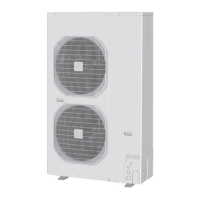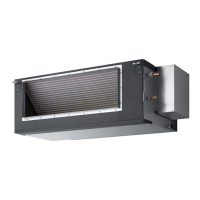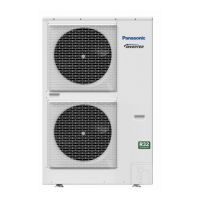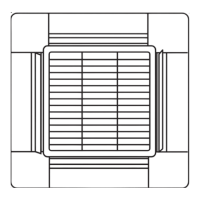1-47
1
1-12. LEAK TEST, EVACUATION AND ADDITIONAL REFRIGERANT CHARGE
Perform an air-tightness test for this package A/C. Check that there is no leakage from any of the connections.
ir and moisture in the refrigerant system may have undesirable effects as indicated below.
pressure in the system rises
operating current rises
cooling (or heating) efficiency drops
moisture in the refrigerant circuit may freeze and block
capillary tubing
water may lead to corrosion of parts in the refrigerant system
Therefore, the indoor unit and tubing between the indoor
and outdoor unit must be leak tested and evacuated
to remove any noncondensables and moisture from the
system. (Figs. 1-38 and 1-39)
Air Purging with a Vacuum Pump (for Test Run)
Preparation
Check that each tube (both liquid and gas tubes) between the
indoor and outdoor units has been properly connected and all
wiring for the test run has been completed. Remove the valve
caps from both the gas and liquid service valves on the outdoor
unit. Note that both liquid and gas tube service valves on the
outdoor unit are kept closed at this stage. (Fig. 1-40)
Fig. 1-38 Fig. 1-39
Manifold gauge Vacuum pump
Outlet
Inlet
Lo Hi
Fig. 1-40
Manifold valve
Pressure
gauge
Cylinder
valve
Nitrogen gas cylinder
(In vertical standing
position)
Charge hose
Open
Close
Gas tube
Liquid tube
Outdoor unit
Close
The refrigerant charge at the time of shipment is only
guaranteed sufficient for a tubing length of up to 30 m.
The tubing may exceed this length, up to the maximum
permitted length; however, an additional charge is
necessary for the amount that the tubing exceeds 30 m.
(No additional refrigerating machine oil is needed.)
1. Leak Test
(1) With the service valves on the outdoor unit closed, remove the 7.94 mm flare nut and its bonnet on the gas
tube service valve. (Save for reuse.)
(2) Attach a manifold valve (with pressure gauges) and dry nitrogen gas cylinder to this service port with charge
hoses.
Use a manifold valve for air purging. If it is not available, use a stop valve for this
purpose. The “Hi” knob of the manifold valve must always be kept closed.
(3) Pressurize the system up to 4.15 MPa (42 kgf/cm
2
G) with dry nitrogen gas and close the cylinder valve
when the gauge reading reaches 4.15 MPa (42 kgf/cm
2
G). Then, test for leaks with liquid soap.
To avoid nitrogen entering the refrigerant system in a liquid state, the top of the
cylinder must be higher than the bottom when you pressurize the system.
Usually, the cylinder is used in a vertical standing position.
(4) Do a leak test of all joints of the tubing (both indoor and outdoor) and both gas and liquid service valves.
Bubbles indicate a leak. Wipe off the soap with a clean cloth after a leak test.
(5) After the system is found to be free of leaks, relieve the nitrogen pressure by loosening the charge hose
connector at the nitrogen cylinder. When the system pressure is reduced to normal, disconnect the hose
from the cylinder.
CAUTION
CAUTION
SM830194-02BigPAC-i.indb47SM830194-02BigPAC-i.indb47 2012/09/0311:23:412012/09/0311:23:41
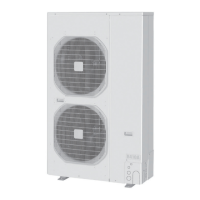
